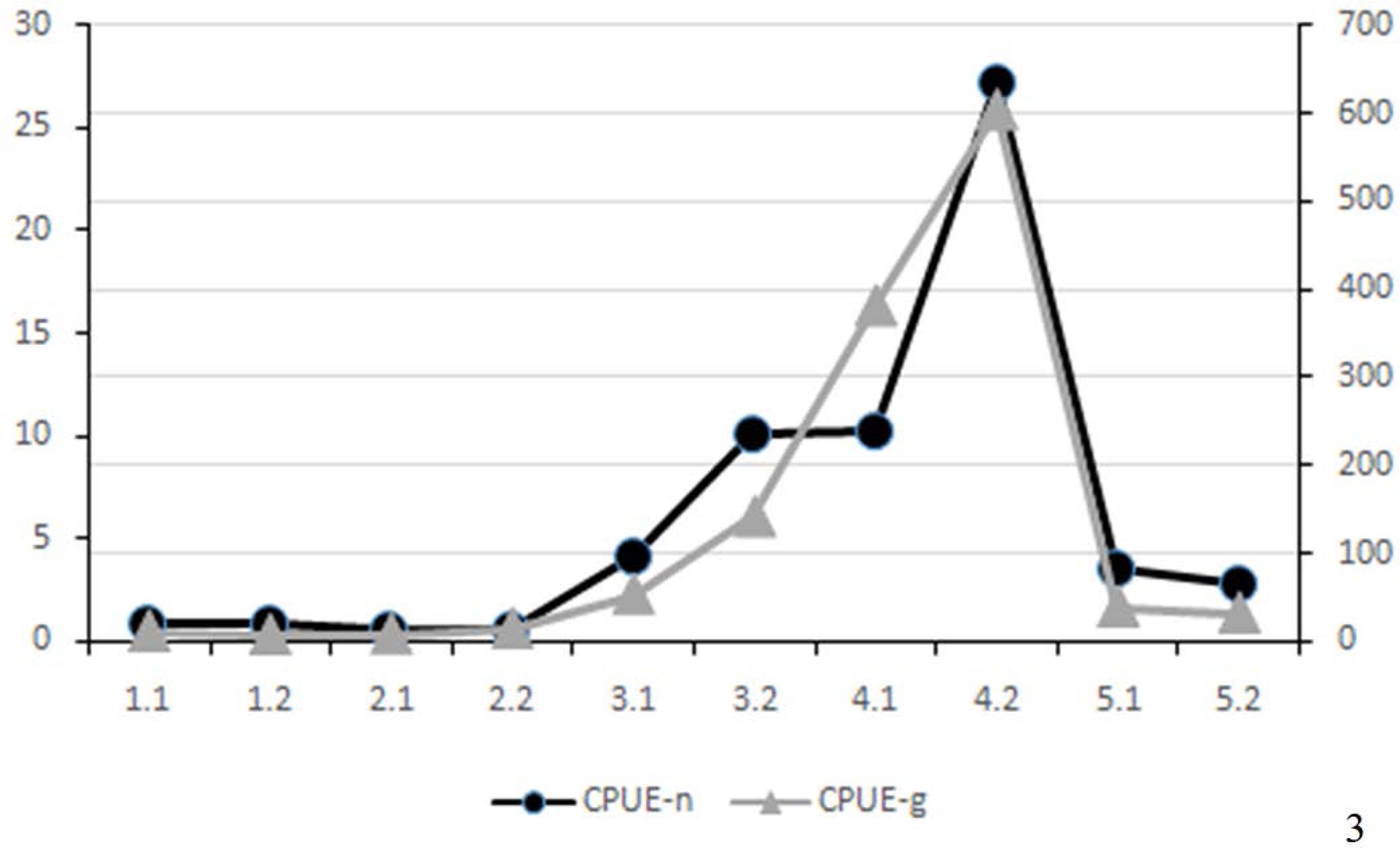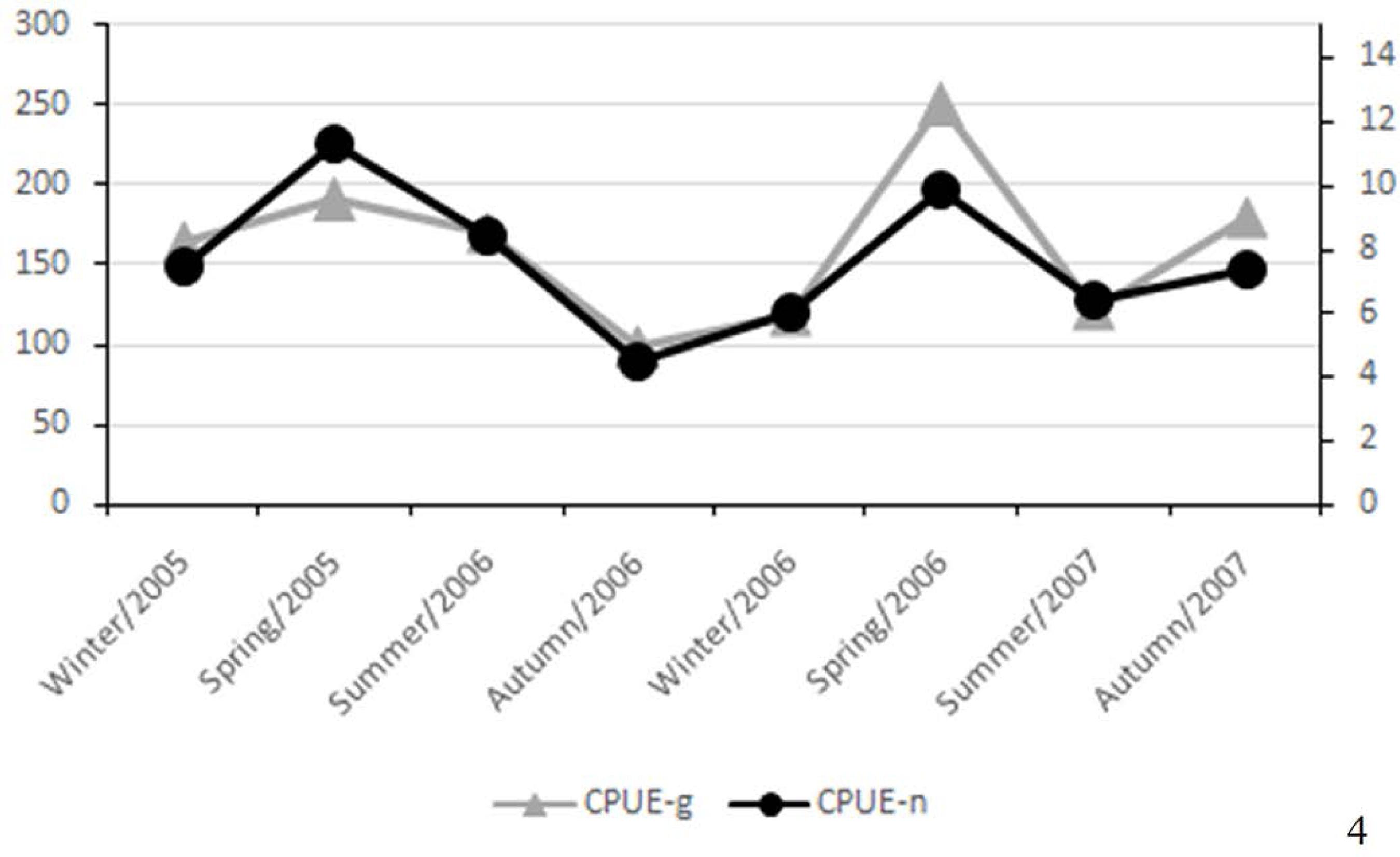Abstract:
A total of 1,471 specimens of 16 species of flatfishes (Pleuronectiformes) were caught during 48 sampling campaigns between July 2005 and June 2007 at ten stations in Guanabara Bay, Rio de Janeiro, Brazil. Paralichthyidae was the dominant family, with Etropus crossotus as the dominant species. The outer stations, especially those on the western side of the lower estuary, were distinguished as a result of their higher abundance of flatfishes and number of species. The spatial distribution of E. crossotus and its population structure indicate that this species is an estuarine resident despite the apparent reduction in its area of occupation within the estuarine complex. Among the other species, nine were classified as marine stragglers (Achirus declivis, Bothus ocellatus, Cyclopsetta chittendeni, Etropus longimanus, Paralichthys orbignyanus, P. patagonicus, Syacium micrurum, Symphurus diomedeanus and Trinectes paulistanus) and three as estuarine opportunists (Bothus robinsi, Citharichthys macrops and Syacium papillosum); another three could not be classified due to the small number of captures or lack of previous data (S. tessellatus, A. lineatus and C. spilopterus).
Keywords:
biodiversity; community; estuarine fishes; flatfishes; Paralichthyidae






